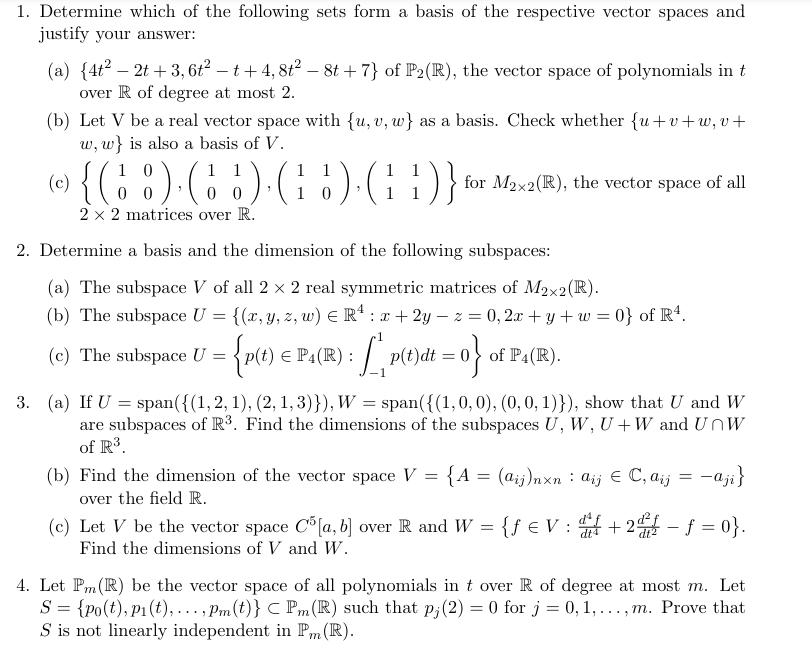Answered step by step
Verified Expert Solution
Question
1 Approved Answer
1. Determine which of the following sets form a basis of the respective vector spaces and justify your answer: (a) {4t 2t+3,6t t +4,

1. Determine which of the following sets form a basis of the respective vector spaces and justify your answer: (a) {4t 2t+3,6t t +4, 8t - 8t+7} of P2(R), the vector space of polynomials in t - over R of degree at most 2. (b) Let V be a real vector space with {u, v, w} as a basis. Check whether {u+v+w, v+ w, w} is also a basis of V. (c) 10 1 1 1 0 1 1 for M2x2(R), the vector space of all {(68) (6) (5) (G)} to 00 00 2 x 2 matrices over R. 2. Determine a basis and the dimension of the following subspaces: (a) The subspace V of all 2 2 real symmetric matrices of M22 (R). (b) The subspace U = {(x, y, z, w) = R4x+2y-z = 0,2x + y + w = 0} of R4. (c) The subspace U = t)dt = 0} {p(t) P(R): [p(t) dt = of P4(R). 3. (a) If Uspan({(1, 2, 1), (2, 1, 3)}), W = span({(1, 0, 0), (0, 0, 1)}), show that U and W are subspaces of R3. Find the dimensions of the subspaces U, W, U+W and Unw of R3. (b) Find the dimension of the vector space V = {A = (aij)nxn : aij C, aij = aji} over the field R. - (c) Let V be the vector space C [a, b] over R and W = { V: +2 = 0}. Find the dimensions of V and W. 4. Let Pm (R) be the vector space of all polynomials in t over R of degree at most m. Let S = {po(t), p1(t),..., Pm(t)} C Pm(R) such that p; (2) = 0 for j = 0, 1, ..., m. Prove that S is not linearly independent in Pm (R).
Step by Step Solution
There are 3 Steps involved in it
Step: 1

Get Instant Access to Expert-Tailored Solutions
See step-by-step solutions with expert insights and AI powered tools for academic success
Step: 2

Step: 3

Ace Your Homework with AI
Get the answers you need in no time with our AI-driven, step-by-step assistance
Get Started


